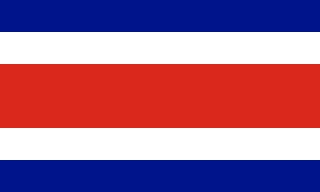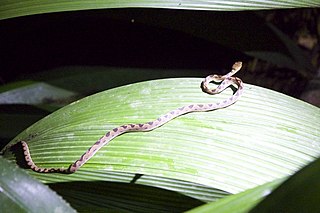
Costa Rica, officially the Republic of Costa Rica, is a country in the Central American region of North America. Costa Rica is bordered by Nicaragua to the north, the Caribbean Sea to the northeast, Panama to the southeast, and the Pacific Ocean to the southwest, as well as maritime border with Ecuador to the south of Cocos Island. It has a population of around five million in a land area of 51,060 km2 (19,710 sq mi). An estimated 333,980 people live in the capital and largest city, San José, with around two million people in the surrounding metropolitan area.

San José is the capital and largest city of Costa Rica, and the capital of the province of the same name. It is in the center of the country, in the mid-west of the Central Valley, within San José Canton. San José is Costa Rica's seat of national government, focal point of political and economic activity, and major transportation hub. San José Canton's population was 288,054 in 2011, and San José's municipal land area is 44.2 square kilometers, with an estimated 333,980 residents in 2015. Together with several other cantons of the central valley, including Alajuela, Heredia and Cartago, it forms the country's Greater Metropolitan Area, with an estimated population of over 2 million in 2017. The city is named in honor of Joseph of Nazareth.

Alajuela is a province of Costa Rica. It is located in the north-central part of the country, bordering Nicaragua to the north. It also borders the provinces of Heredia to the east, San José to the south, Puntarenas to the southwest and Guanacaste to the west. As of 2011, the province had a population of 885,571. Alajuela is composed of 16 cantons, which are divided into 111 districts. It covers an area of 9,757.53 square kilometers.
Different snakes are called water snakes. "Water snake" is also sometimes used as a descriptive term for any snakes that spend a significant time in or near fresh water, such as any species belonging to the family Acrochordidae. They should not be confused with sea snakes, which live primarily or entirely in marine environments.

The wildlife of Costa Rica comprises all naturally occurring animals, fungi and plants that reside in this Central American country. Costa Rica supports an enormous variety of wildlife, due in large part to its geographic position between North and South America, its neotropical climate, and its wide variety of habitats. Costa Rica is home to more than 500,000 species, which represent nearly 5% of the species estimated worldwide, making Costa Rica one of the 20 countries with the highest biodiversity in the world. Of these 500,000 species, a little more than 300,000 are insects.

Manuel Antonio National Park is a small national park in the Central Pacific Conservation Area located on the Pacific coast of Costa Rica, just south of the city of Quepos, Puntarenas, and 132 km (82 mi) from the national capital of San José. Established in 1972, the local community sought conservation to prohibit development of the natural environment for tourist attraction. They also protested the beach restrictions on locals by foreign owners. With a land area enumerating 1,983 ha, it is the smallest of any Costa Rican national park. The park caters to as many as 150,000 visitors annually, and is well known for its beautiful beaches and hiking trails. In 2011, Manuel Antonio was listed by Forbes as among the world's 12 most beautiful national parks.

Terciopelo is a species of pit viper found at low to moderate elevations in northeast Mexico and Central America, and into South America where it is known from elevations up to 2600 meters in the Colombian and Ecuadorian Andes, as well as into Venezuela. With a mass of up to 6 kilograms (13 lb) and a maximal length of 2.5 metres (8.2 ft), the terciopelo is among the largest pit vipers. It is light to dark brown in color, often with yellow zig-zag-shaped lines on each side of the body. Dubbed "the ultimate pit-viper" for its large size, fangs and venom yield, it has a fearsome reputation, responsible for the most snakebites within its range because of its defensive temperament and proximity to human residence. However, like other venomous snakes, it avoids confrontation with humans whenever possible. No subspecies are currently recognized.

Tantilla is a large genus of harmless New World snakes in the family Colubridae. The genus includes 66 species, which are commonly known as centipede snakes, black-headed snakes, and flathead snakes.
Maquenque Wildlife Refuge, is a protected area in Costa Rica, managed under the Arenal Huetar Norte Conservation Area, it was created in 2005 by decree 32405-MINAE.

Arenal Volcano National Park is a Costa Rican national park in the central part of the country, part of the Arenal Huetar Norte Conservation Area. The park encompasses the Arenal Volcano, the most active in the country, which was believed to be dormant until a major eruption in 1968. It neighbors Lake Arenal, which is the site of the country's largest hydroelectricity project, the Lake Arenal Dam.

The Costa Rican páramo, also known as the Talamanca páramo, is a natural region of montane grassland and shrubland of Costa Rica and western Panama.
Costa Rican agriculture plays a profound part in the country's gross domestic product (GDP). It makes up about 6.5% of Costa Rica's GDP, and 14% of the labor force. Depending upon location and altitude, many regions differ in agricultural crops and techniques. The main exports include: bananas, pineapples, coffee, sugar, rice, vegetables, tropical fruits, ornamental plants, corn, potatoes and palm oil.
Turrialba is a district of the Turrialba canton, in the Cartago province of Costa Rica.

The Central American dry forests ecoregion, of the tropical and subtropical dry broadleaf forests biome, is located in Central America.
The Instituto Clodomiro Picado is a research center in Vázquez de Coronado, San José Province, Costa Rica. Established in 1970, the institute is a research unit of the Universidad de Costa Rica, responsible for the production of snake antiophidic serums and scientific research on serpents and their venoms, as well as educational and extension programs in rural areas and hospitals. It received its name in honor of Costa Rican scientist Clodomiro Picado Twight.

Project Vibroana is a privately operated serpentarium, rescue centre and environmental education facility located near Turrialba Volcano in the Cartago Province of Costa Rica. The centre is dedicated to the rehabilitation of mistreated, injured, orphaned, and/or confiscated snakes, focusing primarily on venomous species. Once the animals are fully rehabilitated, they are reintroduced into their natural habitats in protected areas, mainly in the Pacuare River primary forest. Visitors are permitted in the centre during certain times each day. The center was created and is run by Minor Camacho, a Costa Rican herpetologist. The educational guide explores the natural history and habitat of poisonous snakes more than their taxonomy.
Hydromorphus is a genus of snakes in the subfamily Dipsadinae.

Leptodeira septentrionalis, the northern cat-eyed snake, is a species of medium-sized, slightly venomous snake, found from southern Texas to Costa Rica.
Hydromorphus dunni, also known as Dunn's water snake, is a snake of the colubrid family. It is found in Panama.












